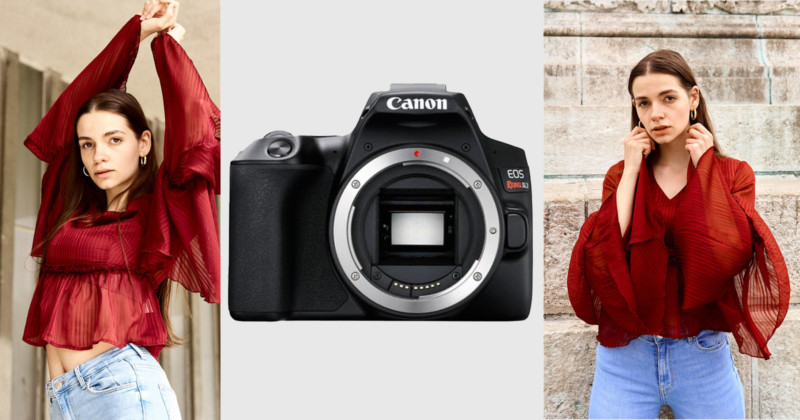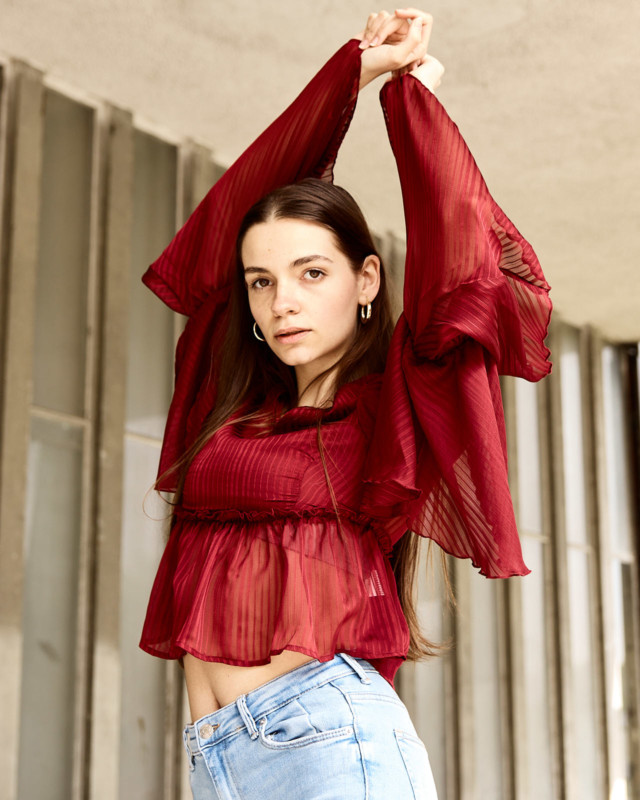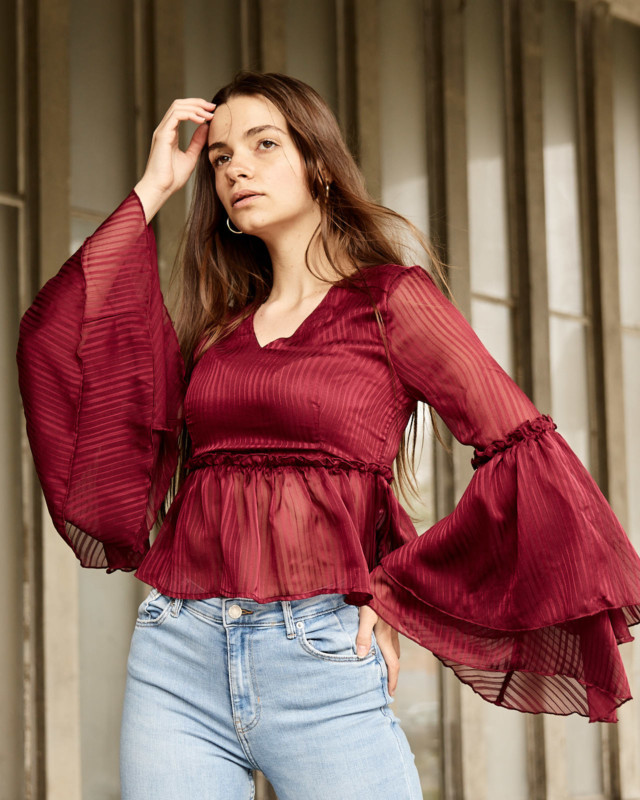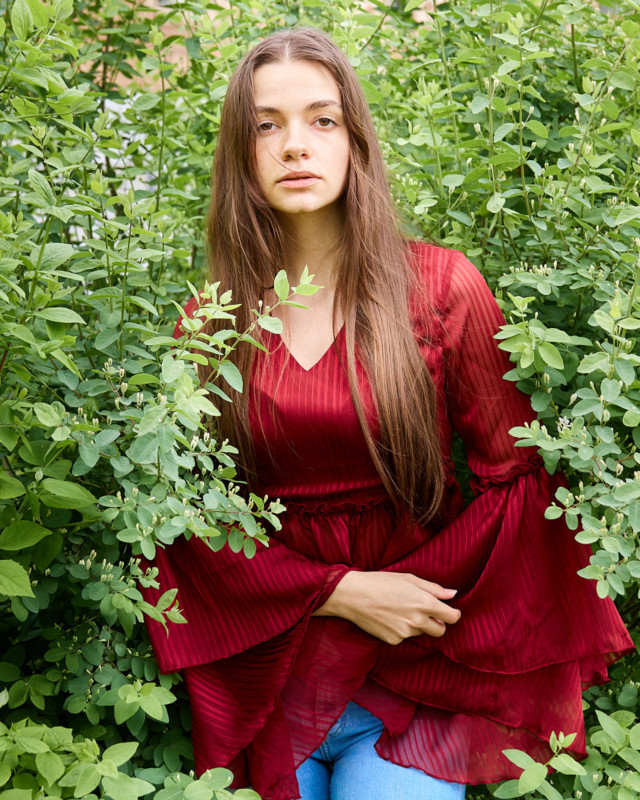
Fashion photography is expensive. Even a small test shoot has some costs associated with it. What is more expensive is good fashion photography.
Cameras, lights, modifiers, crew, retouching, locations all add up to some ghastly sums. But what if it doesn’t have to be that way? I set myself a challenge to do a fashion shoot with a $0 budget and the most basic gear.
Fun times to be had, said I. The shoot was arranged to be basic, with simple styling, makeup, and posing. Nothing extraordinary really. Unfortunately, when it comes to fashion photography, that is as far as you can go without spending a penny. Nevertheless, let me explain the concept a bit:
Styling
I am not a professional stylist, nor do I claim to be one. Being restricted by the models’ wardrobe, my imagination led me to pick a classic red and blue combination. The two colors work well together and when paired with green, they form a nice contrasting palette.
Something you should always have in the back of your head is the color wheel. It is a great tool to help you style a production, or pick the right combination. It is also quite useful in terms of helping you find the right color grade or even the color gel to use.

Makeup
I went back to my early fashion work where I didn’t know how to find a makeup artist. I simply asked the model to do her own natural makeup. She did a great job in portraying her face in a very natural way. Did I expect professional makeup? No, the reason being that she is a model, not a makeup artist. Often your first fashion work will be without a makeup artist. As you grow your portfolio you can start reaching out to people and getting more creative.
Gear

For many photographers, this is the most interesting part. If you’ve jumped straight here, I strongly suggest reading over the previous sections first. Nevertheless, the gear used was quite simple. An entry-level Canon 250D (Rebel SL3) camera and a Sigma 17-55mm f/2.8 lens designed for APS-C cameras. Those would be around $800 new, but if you’re like me and you buy used, it would be around $400.
Read more: How I Saved $15,000 When Buying Pro Camera Gear
Composition and Location
All my early work was done on location. I’m an avid cyclist and getting around is no problem. Renting a studio can be expensive, and studio lighting did seem daunting. If you’re looking to learn light, I suggest Light: Science and Magic. I am not affiliated with them — I just genuinely love the book. I am convinced that you will be able to shoot in any light a pro after studying it.
With this shoot, it had to be on location. The Sun was my only light source. Yes, I had the on-camera flash, you may say. I tend to dislike it so much I tape it to the camera. The direct light it produces isn’t too flattering on most faces.
Shooting on location has its caveats. It is time-dependent. Many photographers like to calculate where the Sun will be, and what will it do before they work on location. That way, you’re getting the most out of the Sun.
In terms of the location itself, I chose a place with a nice brutalist pattern, that was located right next to a park, which was all close to a textured monument wall. Seems quite random, but let me explain. The brutalist pattern gave structure to the images. You can use architecture to your advantage when it comes to fashion work. Many people like structure, and you can make your work that bit more appealing by having it.
The second location, a nearby park, was chosen because green works well with red and blue. After all, they are the primary colors. The third location was chosen because textured surfaces are quite popular in fashion and portrait work. The eye is drawn to the complexity of textured surfaces. Hence canvas backdrops are so popular: they look natural and have plenty of texture.
Results
I have to be honest here: given the scale of the production, this is not ground-breaking work that lands in fashion magazines. At the same time, it is not meant to be that work, it is meant to demonstrate the bottom line of what you can do with the minimum kit. I am not taking an entry-level camera to an editorial shoot for Marie Claire. At the same time, when I started out, the entry-level gear was more than I needed.
To do the camera justice, the images are not retouched and were only color-adjusted in Capture One.
Location 1


As you can see, the lines add plenty of structure to the images, and thus makes them that bit more appealing. A problem I’m noticing straight away is poor color reproduction and lack of dynamic range. However, in the case of these two images, it isn’t a large concern. If this was shot in an environment where there were bright highlights and extremely dark shadows, that would be more of an issue. Knowing the limits of your gear is crucial to making sure you’re getting most of it and not stretching it beyond.
Location 2

I am quite happy with the colors here. Primary tones work together to create a nice combination. A few things to consider would be the relative exposure of the model’s face and the surrounding plants. Ideally, I would make the surroundings darker. Again, that’s a personal choice.
Another slight problem I see is the lack of accurate color reproduction in the leaves. Because they all are close tone-wise, the subtle differences are not as evident as they would be on a larger sensor. If you were to have the model wear green and be surrounded by plants you would perhaps face more color reproduction problems.
Location 3

This is the image I am most happy with. The pose is just right and the subtle blur in the sleeves gives that dynamic element to the photograph. Magically, the skin tones and the background fall in the same color palette.
Would the Photos Look Better if the Better Gear Was Used?
If I was to somehow take the exact same photo with an entry-level camera and a $55,000 Phase One, it would certainly look better. Better dynamic range, more colors, and more detail would give the image technical superiority. However, would that work become ground-breaking or land in Vogue? No, it wouldn’t, even if you were to tell everyone that a $55,000 camera was used to create it.
How Much Gear Do You Need?
If you’re starting out, a camera and a lens are plenty. I’d turn away from upgrading and instead focus on learning as much as possible. If I was to have 20 years of experience behind my back, the images would be better in some way. If I was to have no experience behind my back, the images would look worse. The bottom line is: you don’t need all the equipment in the world if you don’t know how to use it.
A Word on Buying Gear
What gear should I buy is perhaps the single most common question photographers ask. While the shoot for this article was done on a relatively new 250D, I would not recommend it to beginners. Seems counterintuitive, right? Not really.
A photographer I coach has invested in a 2006 Canon 5D Original for just over $300 and has been quite happy with it. In most cases, it is best to buy a full-frame, but old camera if you’re on a budget. The aforementioned 5D is a fantastic option that I would gladly suggest to every beginner. Sure, it is not as jam-packed with features, but it offers superior image quality that you will appreciate a lot more than GPS tracking.
But, fashion photography is so much more than just having a camera and a model in front of it. However, it is how all fashion photographers started. The next step from here would be to learn to light and take your work even further. Investing in a 30-40 inch umbrella would be a wise choice. Pair that with a Speedlite and you have a great 1 light kit.

A Word of Caution
Another reason I like the original 5D so much is that you can use it with third-party triggers. Some Canon cameras have no center pin in their hot-shoe, which makes off-camera flash impossible. I was shocked to learn that.
How Much Money Do You Need Per Shoot?
You can do a lot in direct sunlight and simple concepts. I suggest Peter Lindbergh: On Fashion Photography. That book never failed to inspire me to create something simple yet with a message.
If you’re interested in working in studios, you will inevitably have to pay an hourly/daily rental fee. Discussing the figures is quite difficult as the numbers vary dramatically. Where I am based, production costs are averaging $400 provided the crew works for collaboration. That said, I had them as low as $30. Usually, a studio will ask around $40 to $50 for an hour or renting. Know that if you’re investing in a fashion shoot, you must have it planned and not improvise on the spot.
Read more: The Ultimate Guide to Fashion Shoots: From Idea to Magazine Submission
Closing Thoughts
There are plenty of great images you can make with the kit you already own. Even if you’re on a tight budget and only have a single camera and a single lens. The equipment is rarely the thing holding anyone back from becoming better. With great styling, makeup, and locations, you can take incredible images with a fairly modest kit.
After all, it’s said that the best camera is the one you have right in front of you.
About the author: Illya Ovchar is a fashion photographer based in Budapest, Hungary. The opinions expressed in this article are solely those of the author. You can find more of Ovchar’s work on his website.